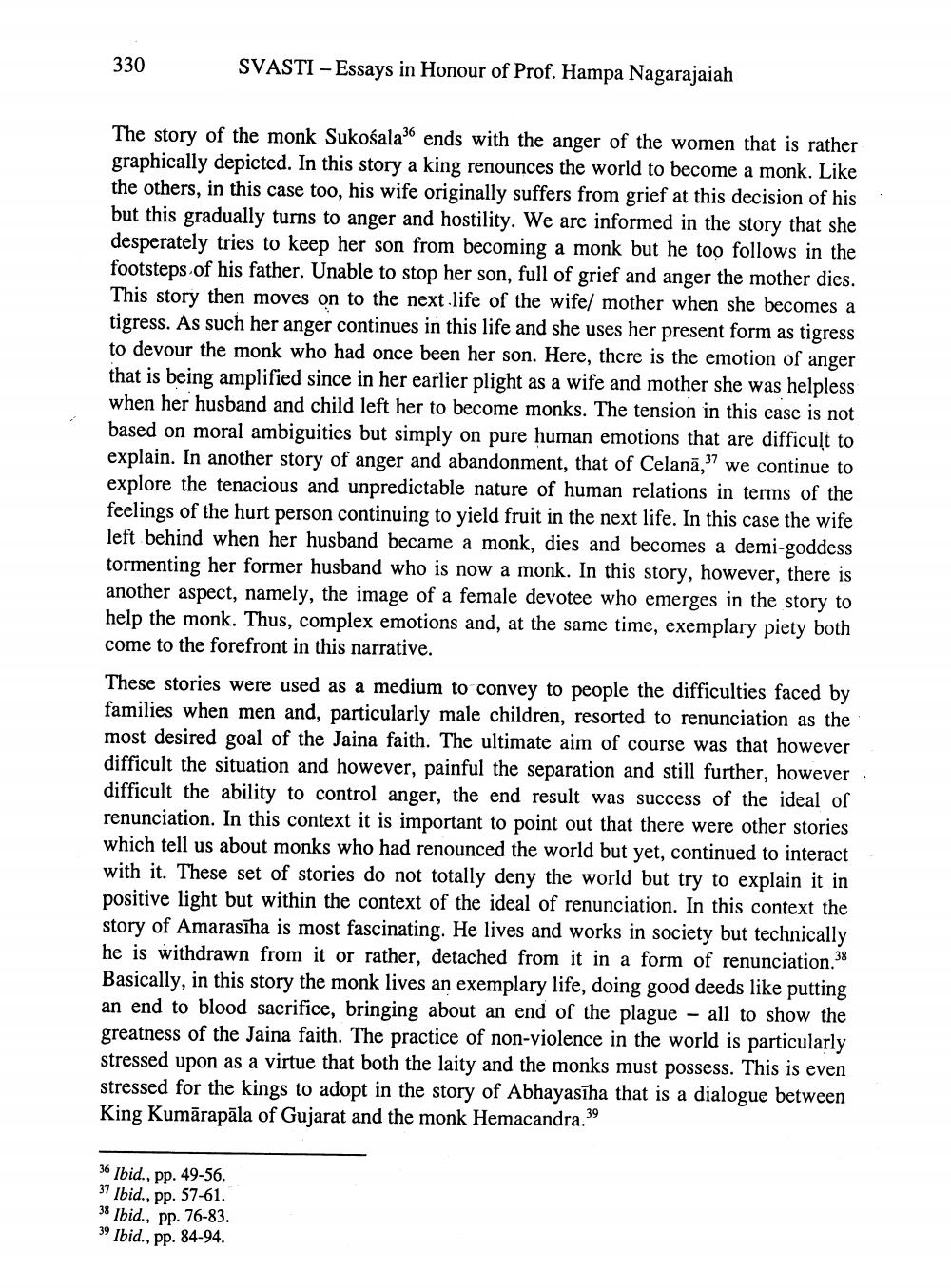________________
330
SVASTI - Essays in Honour of Prof. Hampa Nagarajaiah
The story of the monk Sukošala36 ends with the anger of the women that is rather graphically depicted. In this story a king renounces the world to become a monk. Like the others, in this case too, his wife originally suffers from grief at this decision of his but this gradually turns to anger and hostility. We are informed in the story that she desperately tries to keep her son from becoming a monk but he too follows in the footsteps of his father. Unable to stop her son, full of grief and anger the mother dies. This story then moves on to the next life of the wife/ mother when she becomes a tigress. As such her anger continues in this life and she uses her present form as tigress to devour the monk who had once been her son. Here, there is the emotion of anger that is being amplified since in her earlier plight as a wife and mother she was helpless when her husband and child left her to become monks. The tension in this case is not based on moral ambiguities but simply on pure human emotions that are difficult to explain. In another story of anger and abandonment, that of Celanā,37 we continue to explore the tenacious and unpredictable nature of human relations in terms of the feelings of the hurt person continuing to yield fruit in the next life. In this case the wife left behind when her husband became a monk, dies and becomes a demi-goddess tormenting her former husband who is now a monk. In this story, however, there is another aspect, namely, the image of a female devotee who emerges in the story to help the monk. Thus, complex emotions and, at the same time, exemplary piety both come to the forefront in this narrative.
These stories were used as a medium to convey to people the difficulties faced by families when men and, particularly male children, resorted to renunciation as the most desired goal of the Jaina faith. The ultimate aim of course was that however difficult the situation and however, painful the separation and still further, however difficult the ability to control anger, the end result was success of the ideal of renunciation. In this context it is important to point out that there were other stories which tell us about monks who had renounced the world but yet, continued to interact with it. These set of stories do not totally deny the world but try to explain it in positive light but within the context of the ideal of renunciation. In this context the story of Amarasīha is most fascinating. He lives and works in society but technically he is withdrawn from it or rather, detached from it in a form of renunciation.38 Basically, in this story the monk lives an exemplary life, doing good deeds like putting an end to blood sacrifice, bringing about an end of the plague - all to show the greatness of the Jaina faith. The practice of non-violence in the world is particularly stressed upon as a virtue that both the laity and the monks must possess. This is even stressed for the kings to adopt in the story of Abhayasīha that is a dialogue between King Kumārapäla of Gujarat and the monk Hemacandra.99
36 Ibid., pp. 49-56. 37 Ibid., pp. 57-61. 38 Ibid., pp. 76-83. 39 Ibid., pp. 84-94.




